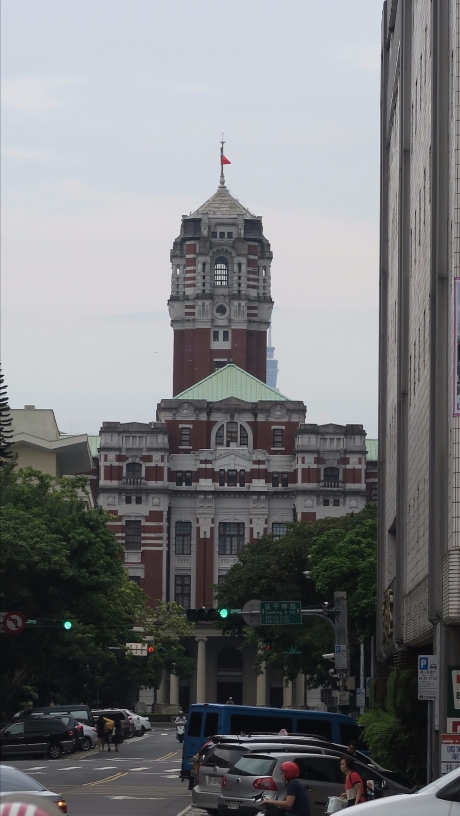I’ve been in Taipei, visiting Crison Chien, a colleague on our ‘smart-eco cities’ project. I was tickled by a brief conversation we had while we were walking around Ximending.
Crison pointed out the building below, when it appeared from afar: “That’s the Presidential Office”

The back of the Presidential Office Building, Taipei
“Ah, it looks very European”
“Yes,” replied Crison, “because it was built by the Japanese”
“Eh?”
“They built it as part of their modernisation programme”
I meant to go back and have a look at the building as a whole – you can apparently visit the inside. I didn’t have time in the end – but the main (baroque) façade looks like this:
Anyway, plenty has been written about the way that different types of idea (in the form of policies, ‘best practices’, and other practical know-how) are ‘transferred’ between countries and across continents in the contemporary world. These transfers often take place very fast – but the interesting question is whether, or to what extent, an idea from one place can straightforwardly be implemented in another quite different context. In the case of the built environment, for example, we might observe that cityscapes around the world are becoming increasingly homogenised. Alternatively, however, we might dismiss that conclusion as rather superficial: actually, any idea (including those related to architecture and engineering) necessarily undergoes a process of ‘translation’ before it takes shape on the ground.
So, I don’t have anything revelatory to bring to your attention here. But it’s always interesting to see examples of how these transfers happened differently (and more slowly) in previous eras, when the new was today’s old, and globalisation was shaped by imperial rather than market dynamics.
Taipei, 3 August 2017
